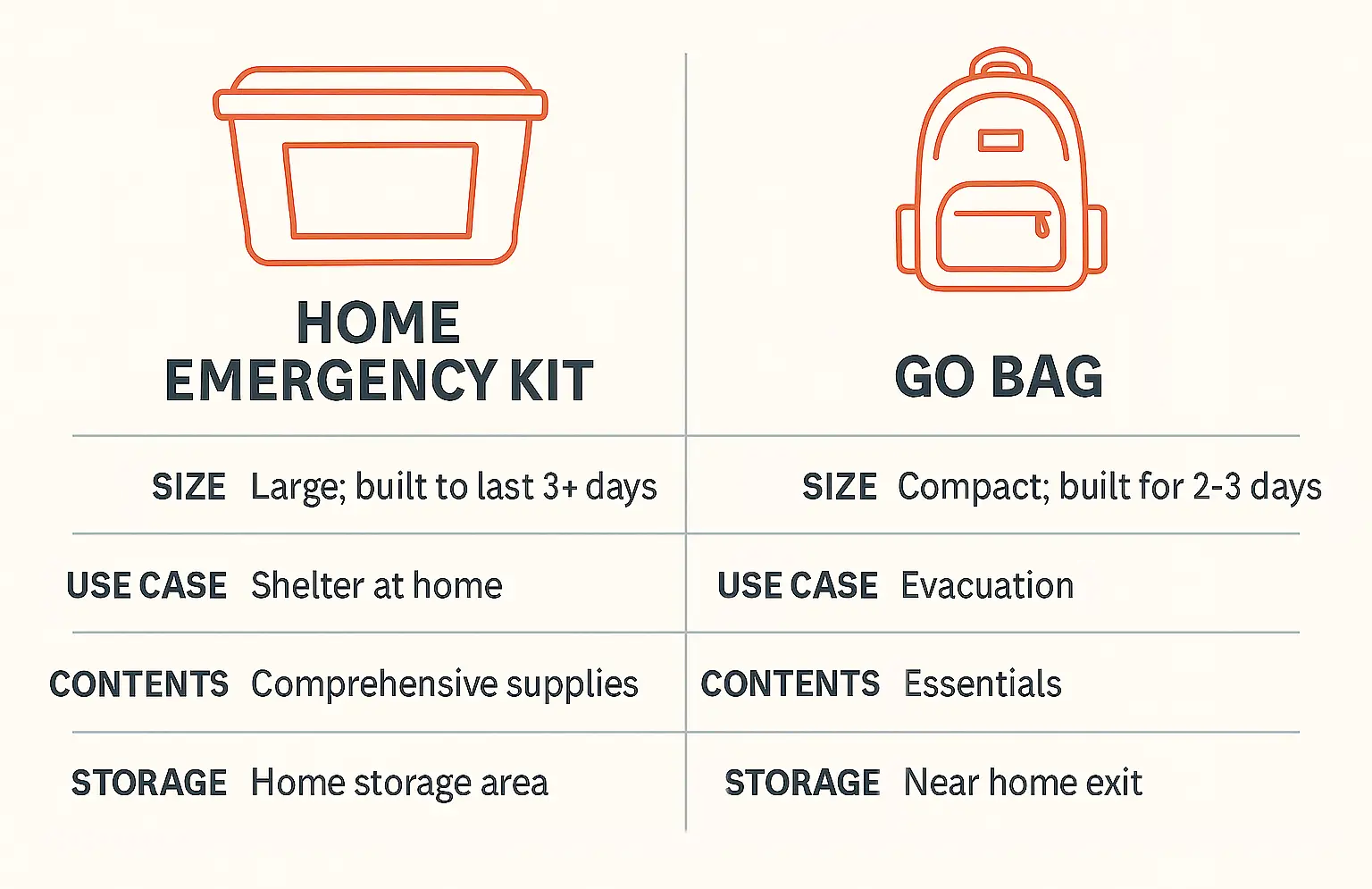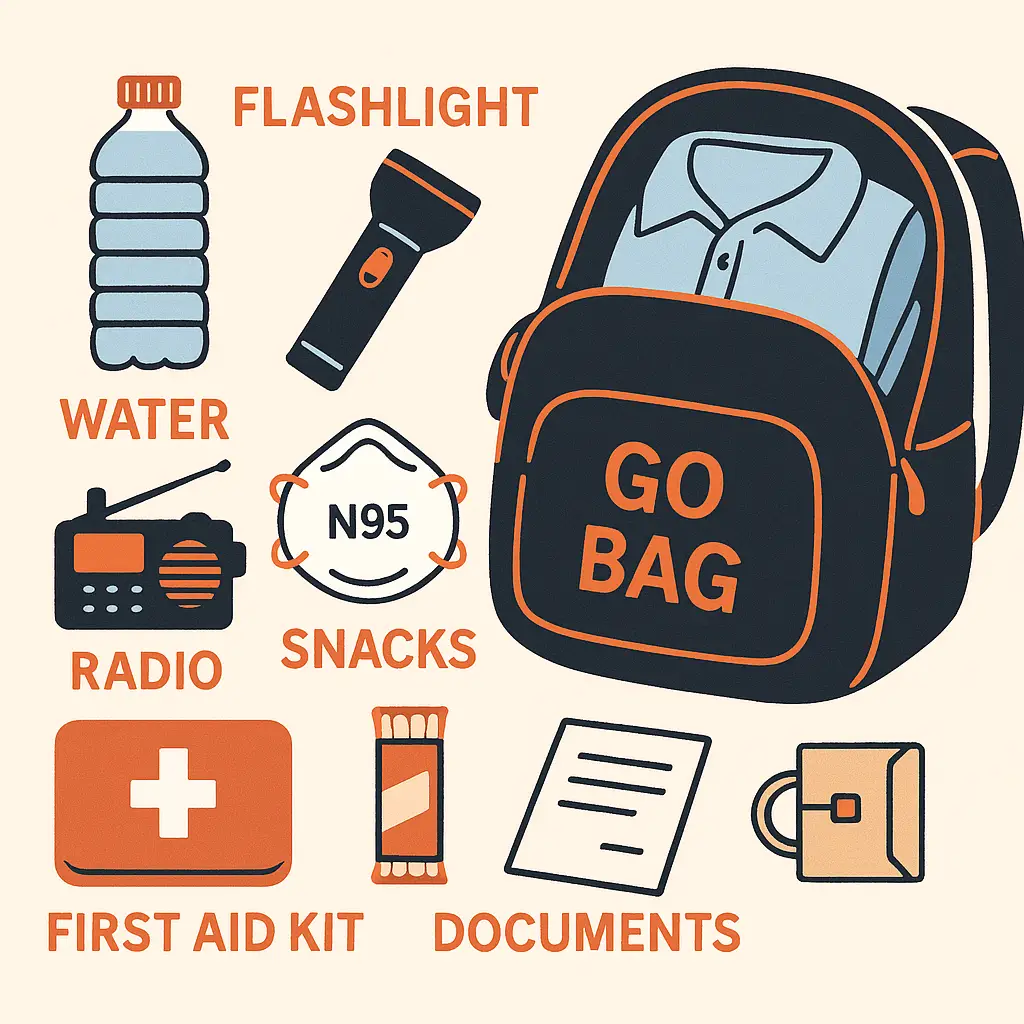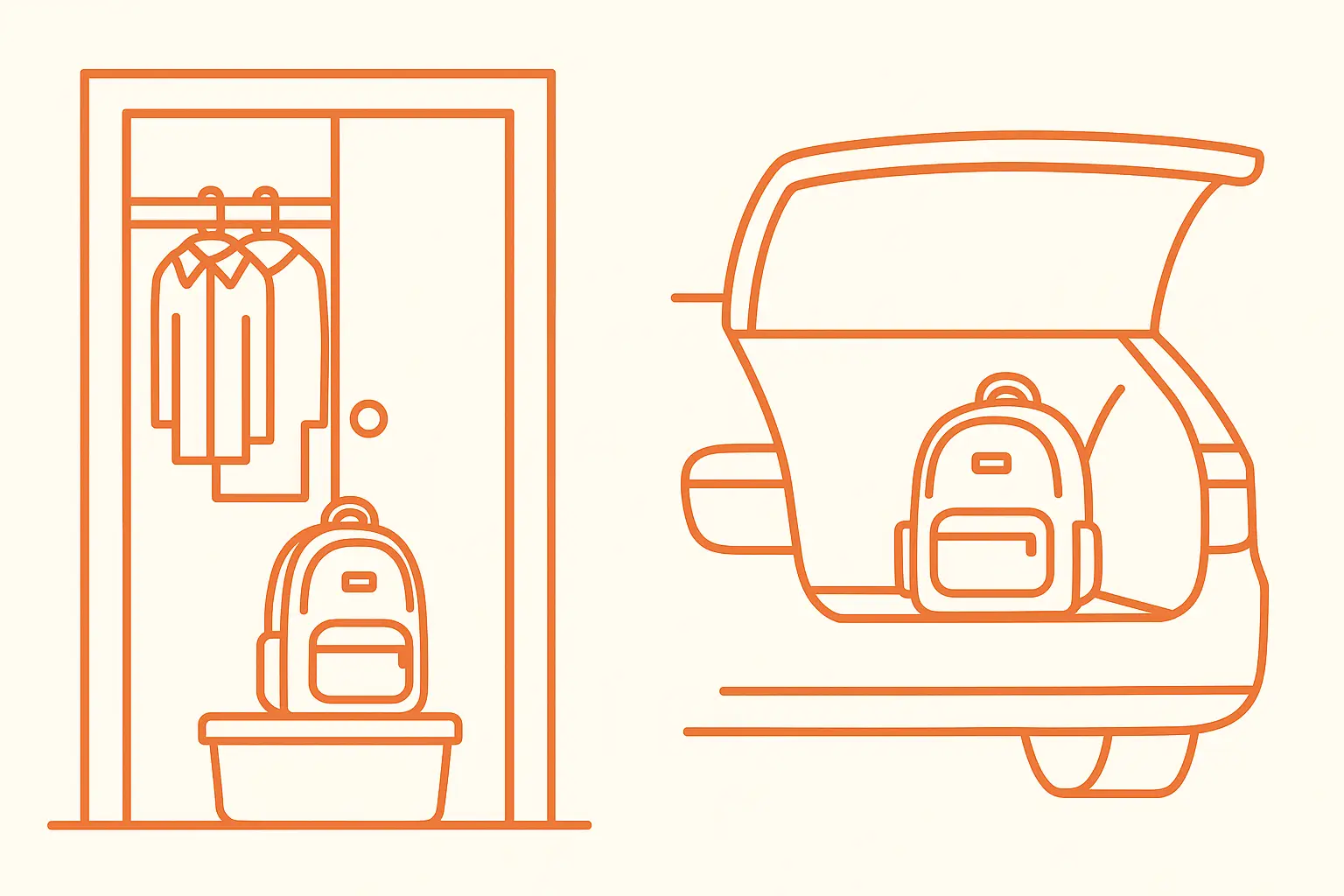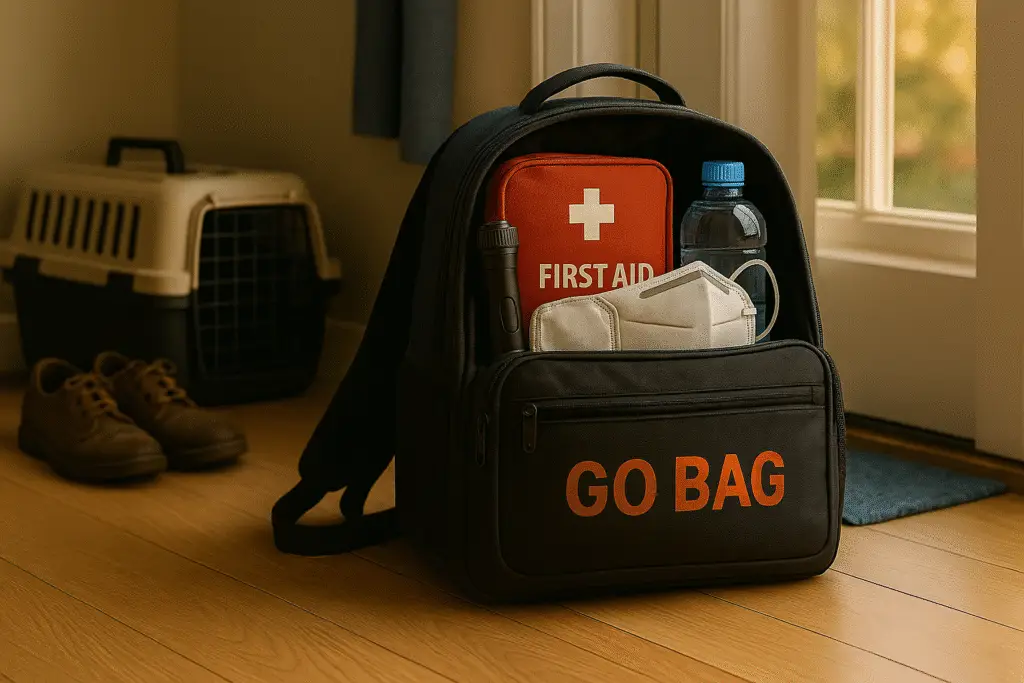Imagine the knock at your door: a police officer says you have five minutes to evacuate. Or maybe it’s an alert on your phone—wildfire approaching, flash flood imminent, gas leak reported nearby. You don’t have time to think. You need to move.
That’s what a Go Bag is for.
Also called a Bugout Bag, this compact, portable emergency kit is designed for fast evacuations. It holds the supplies you’d need to survive and stay safe for up to 72 hours away from home, whether you’re heading to a shelter, a relative’s house, or just getting out of harm’s way.
A Go Bag is different from a Home Emergency Kit, which is meant for sheltering in place. This one is about mobility. Think backpack—not storage bin. Light enough to carry. Easy to grab. Ready when everything else is chaos.

When Do You Need a Go Bag?
Go Bags are for situations where you need to leave quickly and conditions are uncertain. Think:
- Wildfires
- Flash floods
- Gas leaks or chemical spills
- Earthquake damage
- Law enforcement evacuation orders
In these moments, there’s no time to think—just time to act. Your Go Bag keeps you mobile, safe, and focused.
What Goes in a Go Bag?

Why 72 hours? Emergency response experts recommend preparing for at least three days because it often takes that long for local services or aid to become available after a major event. Whether roads are blocked, power is out, or shelters are overwhelmed, you may need to be self-sufficient for the first critical stretch.
You want enough supplies to get through the first 24–72 hours on your own. That includes food, water, critical gear, and personal basics.
Here’s what to include:
Essentials:
- Water (2–3 liters per person)
- Energy bars or shelf-stable snacks
- Flashlight with extra batteries
- First aid kit
- N95 mask or face covering
- Multi-tool or pocketknife
- Phone charger or solar charger
- Emergency whistle
- Small battery-powered or hand-crank radio
Clothing & Comfort:
- Lightweight change of clothes
- Warm layer and rain protection
- Sturdy shoes
- Mylar blanket or compact sleeping bag
Documents & ID:
- Copy of ID and insurance card
- Emergency contact list (written)
- Cash (small bills)
- Local map or evacuation map
Personal Needs:
- Medications (3-day supply)
- Glasses or contact lens kit
- Hygiene items (toothbrush, wipes, sanitizer)
- Baby items, if needed
- Pet food and leash, if applicable
📢 Pro Tip: Use a backpack or duffel bag that’s easy to carry and easy to spot. Ideally, each person in your household should have their own Go Bag, customized to their age, size, and needs. That way, if you’re separated or need to move quickly, everyone has what they need close at hand. A Go Bag isn’t just for you—make sure every member of your household has their own or shares a clearly labeled version.
Where to Keep Your Go Bag

Store your Go Bag in a spot that’s easy to grab on the way out:
- Hall closet or mudroom
- Under your bed
- Car trunk (if it won’t be affected by extreme heat)
Avoid tucking it away in places you’d forget about during a high-stress moment.
Maintenance: Keep It Fresh
Set a reminder to check your Go Bag every 6 months:
- Swap out expired food or meds
- Update documents
- Adjust clothing for the season
Watch Out: Don’t overload it. The goal is mobility. If your Go Bag is too heavy, it won’t help in a fast exit.
Final Thought: The Best Time to Pack Is Before You Need It
Disasters move fast. A Go Bag gives you a head start when every minute matters. Pack it once, review it twice a year, and rest easier knowing you’re ready to move.
Need a checklist? Download the AHA Go Bag Packing List to get started.

